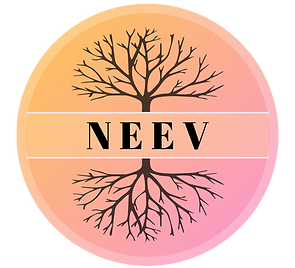Your Magic Guide To Free The Bleeding
- Mehnaaz Patel

- Dec 8, 2020
- 4 min read
Well period is something which comes in a package of stigma, uncomfortability, and a hurdle in our day-to-day life. Every month a person goes through pain, tiredness and irritation from whether it be due to unexpected arrival of period, blood soaking through clothing or the huge stigma around menstruation inhibiting people to talk openly about it.

So, to tame and lessen your worries here’s something that’s been getting popular: Free bleeding!

Now what is free bleeding?
It is bleeding without using any tampons, pads, or other menstrual products to absorb or collect your blood. Some people see it as a movement to normalize period and that it shouldn’t be hidden. Some people have to do it due to financial necessity. Some people wear their usual underwear – while others invest in period-proof clothing like special underwear made for period.
Then
Now most of you must be thinking that this is a new trend. Yes? To answer your question, it’s not. Its been since the 17th-century, although it isn’t mentioned in historical texts that much this particular practice started from 17th-century in England. People then would either free-bleed, use rags to soak up the blood, or fashion makeshift tampons out of things like sponges. Free bleeding in those times though wasn’t an intentional choice. The menstrual activism became prominent in the 1970s. The first reusable item was being worked on before this time, though. In 1967, a patent for a “protective petticoat” with a “moisture-proof material” was registered.

Now
No one knows clearly when this free bleeding movement started. Due to the stigma around free bleeding, many artists have tried to promote it via Instagram. One of them was a marathon’s runner who made the headlines after completing the marathon with bloody leggings.
Controversies on Period
Some ancient civilizations believed period blood was magical, then the idea of period blood being dirty began to seep in over the centuries. Some cultures still shun people from talking about period or the people on period. Nepali people, for example, have historically been banished to huts when menstruating. Thankfully the practice was criminalized in 2017, the stigma still persists.

Reasons
There are numerous reasons to practice free-bleeding. Some of them are – people enjoy their natural state and feel freer without the additions of menstrual products. Some people refuse to hide the fact that they are on their period and to lessen the stigma around it. Others free-bleed to raise awareness of period poverty and that some people don’t have access to products or sufficient menstrual education. And there’s also an environmental aspect to this. Disposable menstrual products result in a huge amount of waste. Like North American landfills have almost 20 million pads and tampons every year!
The Benefits
Free-bleeding has no proven health benefits but there are several anecdotes from people who practice it. Namely, reduced menstrual cramping and less discomfort. Switching from tampons to free-bleeding is also good as it reduces the risk of toxic shock syndrome (TSS). Even though the risk is small, wearing a tampon for too long or wearing one that’s more absorbent than necessary has been tied to TSS. Even the finances are reduced as buying period-proof clothing can be more costly but in the long run it saves more money. And you can even not spend on anything if you prefer to wear your usual underwear.

Risks
Free bleeding helps one free of inhibitions, medically. Period panties and similar products clothing incorporate antimicrobial technology designed to keep the germs at bay. But it isn’t the best option for dealing with menstruation. If exposed to air, menstrual blood may give off an intense smell. Any blood that gets left behind has to be treated as potentially infectious. It also has the ability to carry bloodborne viruses. Such as – Hepatitis C. It can live outside of the body up-to three weeks, hepatitis B can also remain viable for at least seven days. But the risk of transmitting either of these conditions to another person is low without through-the-skin exposure.
So what do you do?
If you want to try free-bleeding then keep these pointers in mind: -
Decide on what do you want to bleed on. To start sit on a towel when sitting down. It’s also helpful to keep a towel on your bed at night.
When do you want to do it? The choice is yours. You can do it toward the end of your cycle or through the entirety of your period.
And where? For this start with an environment which safe and comfortable for you like your home. You can then understand how this works and what to expect from your flow.
Go out only if and when you feel comfortable. Pack a few extra pairs of underwear and a change of pants as there could be a chance your period soaking through your usual clothing.
You can also use your pelvic muscle strength to intentionally hold back your blood to a certain point just like Kegels.
But if you want to let go and have no inhibitions then no need of any extra clothing. You can bleed free and bleed proud!

Reference
Amatya P, et al. (2018). Practice and lived experience of menstrual exiles (Chhaupadi) among adolescent girls in far-western Nepal.
DOI: 10.1371/journal.pone.0208260
Cotropia C, et al (2018).
Hepatitis B questions and answers for the public (2019). Cdc.gov/hepatitis/hbv/bfaq.htm
How do I use tampons, pads, and menstrual cups? (n.d.)
Plannedparenthood.org/learn/health-and-wellness/menstruation/howdo-i-use-tampons-pads-and-menstrual-cups
Read S. (2008). “Thy righteousness is but a menstrual clout”: Sanitary practices and prejudice in early modern England
jps.library.utoronto.ca/index.php/emw/article/view/14757
Standing K, et al. (2019). How cultural attitudes to menstruation have finally started to shift.
thebritishacademy.ac.uk/blog/summer-showcase-2019-how-culturalattitudes-menstruation-have-finally-started-shift
Vostral S. (2017). Toxic shock syndrome, tampons and laboratory standard-setting. DOI:10.1503/cmaj.161479
Withington J. (2016). Storm: Nature and culture. London, UK: Reaction Books.
https://www.healthline.com/health/free-bleeding
_edited.png)



Comments